Leader: Alvan White
Ten people attended for what was meant to be an across-the-board meeting. However the weather turned out to be atrocious, with rain sheeting across the lake. The lake and surrounding woodland does have great potential for birds. However most birds kept under cover, although a Heron, and Long Tailed Tits were seen.
The group benefited from two spider enthusiasts, Catherine Turner and Benjamin Carbuccia. A large thank you goes to these very knowledgeable people, especially to Benjamin who came across from Weston Super Mare for the meeting.
The focus turned out to be very much one where invertebrates and especially spiders featured. This entailed much bush and tree shaking and peeking into the undergrowth. This started with the Rhododendrons at the back of the car park and in turn tree and plant species were then shaken out at the back of the sailing club. Both sites were very productive.
Snippets of spider life cycle information were given as we found specimens and examined spider exuvia, egg sacs and web types.
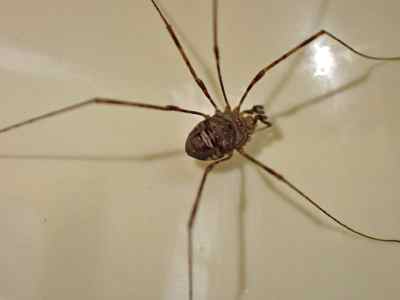
Fork-palped Harvestman Dicranopalpus ramosus © Catherine Turner
A male Fork-palped Harvestman Dicranopalpus ramosus.
The species was originally found in Morocco but has spread into Europe. It was first reported from Bournemouth in 1957.
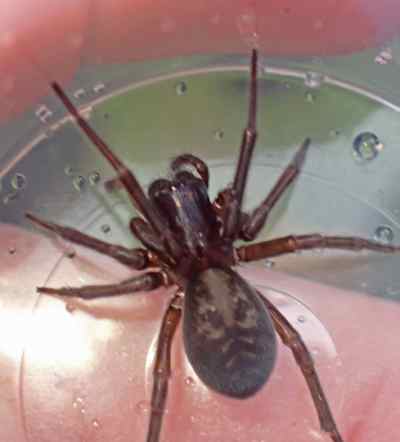
Black lace weaver Amaurobius ferox © Catherine Turner
Black Laceweaver Amaurobius ferox
A. ferox is a matriphagous species, meaning that the young devour their mother after hatching. The transfer of poison via biting and sucking causes a quick death. This species has been known to bite people but in a documented case it was no worse than a wasp sting.
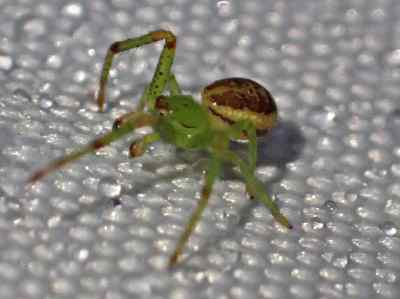
Green crab spider Diaea dorsata © Catherine Turner
Green Crab Spider
The males have an extended non-damaging combat ritual: They stand opposed, stretch their front legs and dance around each other. This can go on for hours.
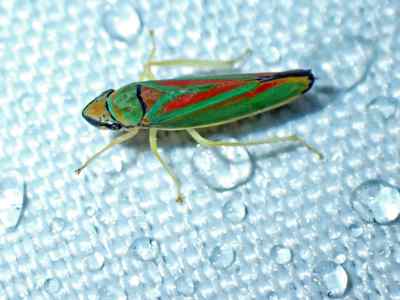
Rhododendron leafhopper Graphocephala fennahi © Benjamin Carbuccia
Several specimens of the colourful Rhododendron leafhopper, Graphocephala fennahi were examined.
This is another introduced species (early 1900s) and comes from the USA. It is a striking mix of green and red, with a black stripe across its face. It is one of very few insects to feed on Rhododendrons (both the adults and larvae feed on the sap). However, they are known for spreading a fungal disease in these plants, often stopping them from flowering.
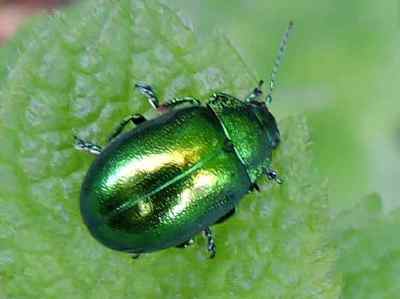
Green Mint Beetle Chrysolina herbacea (found Shearwater 08 09 22) © Alvan White
Thank you to Karen Funnell for also finding specimens to include the beautiful Green mint beetle that had been eating a water mint plant. Also a Green silver lines caterpillar. The adult is extraordinarily camouflaged, please see the adult referred to in the link: https://www.ukmoths.org.uk/species/pseudoips-prasinana/
Large Mirror Carp, with huge dorsal fins were also seen feeding close into the dam. The dam edge had been cut back that morning, so it was thought that they were feeding on insect life that had been thrown out by the cutting.
The meeting was closed at 12:30pm due to the bad weather.
Invertebrate Species List
Arachnids included but not restricted to:
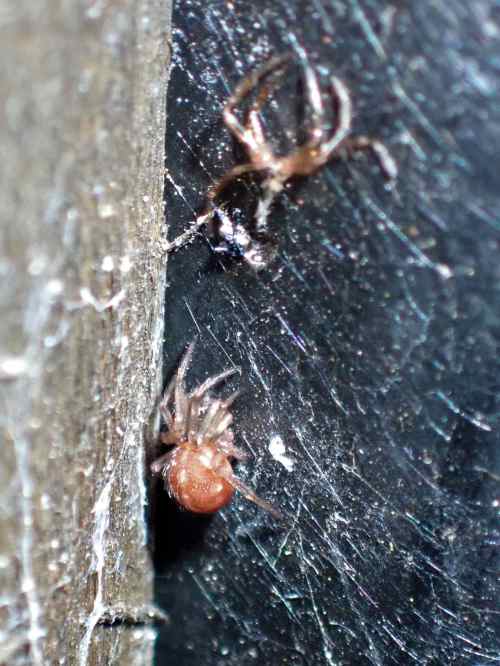
Rabbit hutch spider Steatoda bipunctata © Benjamin Carbuccia
Amaurobius ferox Black Laceweaver
Araneus diadematus Garden spider
Anelosimus vittatus
Clubiona comta
Pisaura mirabilis Nursery-web spider
Cyclosa conica
Diaea dorsata Green crab spider
Dicranopalpus ramosus Fork-palped Harvestman
Lepthyphantes sp
Metellina segmentata
Paidiscura pallens Sputnik spider (dark form)
Paroligolophus agrestis
Phalangium opilio Common harvestman
Steatoda bipunctata Rabbit hutch spide
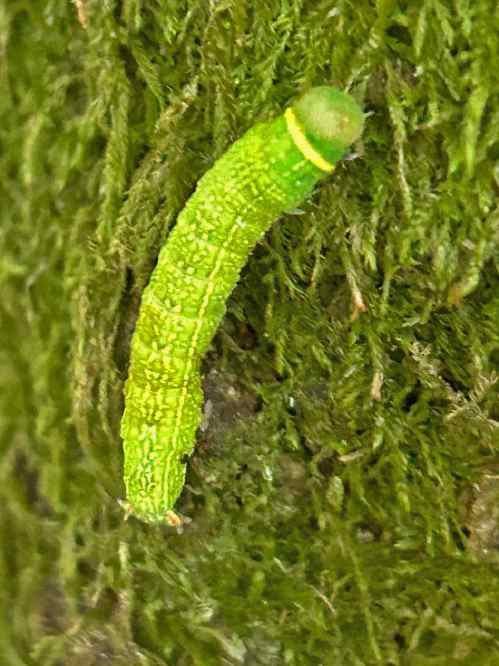
Green Silver Lines Pseudoips prasinana © Karen Funnell
Leaf Beetles (Chrysomelidae)
Chrysolina herbacea Green mint beetle
Froghoppers (Cercopidae)
Philaenus spumarius Spittle bug AKA common froghopper
Leafhoppers (Cicadellidae)
Graphocephala fennahi Rhododendron leafhopper
Moths (Nolidae):
Pseudoips prasinana Green silver lines moth caterpillar
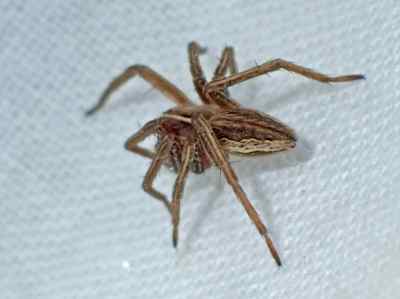
Nursery-web spider Pisaura mirabilis © Benjamin Carbuccia
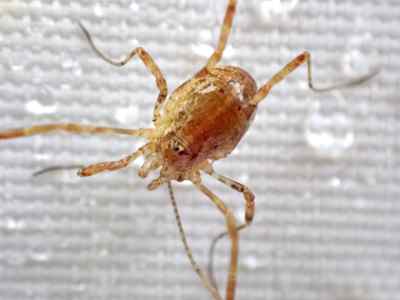
Paroligolophus agrestis © Benjamin Carbuccia
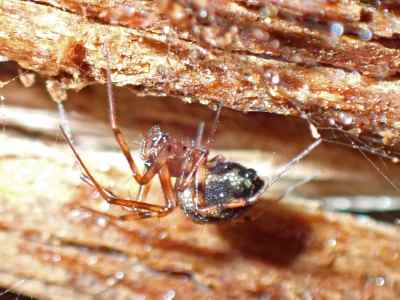
Lepthyphantes sp © Benjamin Carbuccia
Alvan White

Recent Comments